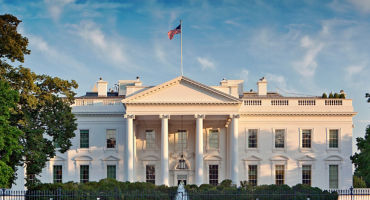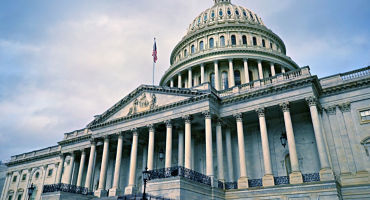- Macro Strategist
Skip to main content
- Funds
- Insights
- Capabilities
- About Us
- My Account
United States, Institutional
Changechevron_rightThank you for your registration
You will shortly receive an email with your unique link to our preference center.
The views expressed are those of the author at the time of writing. Other teams may hold different views and make different investment decisions. The value of your investment may become worth more or less than at the time of original investment. While any third-party data used is considered reliable, its accuracy is not guaranteed. For professional, institutional, or accredited investors only.
Before I unpack the economic and market implications of the sweeping tariffs the Trump administration introduced on April 2 (which have raised the effective tariff rate to the highest level since the 1930s), I want to acknowledge that this is an early response* to a nascent policy. The situation will very likely evolve, and I believe actual tariff rates may end up varying day to day or week to week.
As part of this new policy, a universal 10% tariff on all countries will take effect on April 5. Additional, “reciprocal” tariffs will be implemented on April 9. These are a purported response to tariffs imposed by other nations toward the US. The presidential administration asserts these tariffs represent half the rate of the tariffs imposed toward the US by other countries and positions this halving as a kindness on the part of the US.
There are a few particularly notable aspects of the new policies I’d like to point out. First, the tariff rate for China appears to be “stacking,” meaning that while the new, “reciprocal” tariff is 34%, the effective rate is 54% given 20% was imposed earlier this year. It also ends duty-free de minimis treatment for covered goods. Next, exemptions to future Section 232 tariffs — applied to gold, autos, and energy/critical materials — were mentioned. Investigations into pharma and semiconductors are expected, as well. Finally, on a relative basis, Canada and Mexico will continue to receive no tariffs on USMCA-compliant goods, a 25% tariff on non-USMCA compliant goods, and a 10% tariff on non-USMCA-compliant energy and potash.
Let’s turn our attention back to timing. In theory, because the “reciprocal” tariffs are meant to be enacted a week after the announcement was made, there is room for negotiation. In my view, the administration is likely calculating that using an aggressive starting point increases the probability that other countries make concessions, which the US could accept before/immediately following implementation. I suspect the administration would view such concessions as both a testament to US strength and a means of retaining some revenue from a fiscal perspective. The latter point is important — a reconciliation process may lead to higher debt levels over the medium term with a current policy baseline and the addition of further tax cuts beyond the extension of the Tax Cuts and Jobs Act (TCJA).
As part of this conversation, it’s worth noting the April 2 judicial election results revealed that voters are souring on the Trump administration. This type of feedback can be a disciplinarian, but President Trump is steadfast in his conviction in the efficacy of tariffs, which he seems to view as a solution to structural issues around labor share of income and income inequality. It remains to be seen whether they will achieve the desired outcome over time.
The magnitude of the tariffs will erode, if not destroy, trust among US allies. A loss of trust may make allies less likely to engage in negotiations than the administration bargains on — a dynamic that is likely to become clearer in the coming days. What’s more, a decline in institutional integrity undermines the status of the US dollar as reserve currency. This risk has now accelerated, and even if the administration walks the tariffs back before implementation, this is unlikely to dissipate. In the short and medium term, these actions:
This all said, I’ll be surprised if all these tariffs go into effect as announced, which makes analysis of the situation difficult. Uncertainty multiplier effects can be large — especially when bilateral negotiations with 60 countries may be looming large and potential shifts in tariff rates by the day/week are likely.
*Response written on April 3, 2025.
Expert

Stagflation watch: Thoughts on tariffs, inflation, and Fed policy
Continue readingWeighing the economic winners and losers of the One Big Beautiful Bill Act
Continue readingOne Big Beautiful Bill: Why it’s “buy now, pay later” for markets
Continue readingFiscal versus tariffs: what wins out for Europe?
Continue readingHow China can offset the tariff shock
Continue readingWhat do tariffs mean for portfolios?
Continue readingCould “Liberation Day” trigger a shift in capital flows?
Continue readingBy
URL References
Related Insights
Stay up to date with the latest market insights and our point of view.
Thank you for your registration
You will shortly receive an email with your unique link to our preference center

Stagflation watch: Thoughts on tariffs, inflation, and Fed policy
US Macro Strategist Juhi Dhawan considers signs the US economy may be moving toward a toxic mix of slowing growth and rising inflation, creating challenges for the Fed and investors.

Weighing the economic winners and losers of the One Big Beautiful Bill Act
Macro Strategist Juhi Dhawan unpacks the impact of One Big Beautiful Bill Act, including its potential effect on economic growth, corporate earnings, and the US government deficit and debt.

One Big Beautiful Bill: Why it’s “buy now, pay later” for markets
Multi-Asset Strategist Nanette Abuhoff Jacobson weighs the near-term benefits of the recently enacted US tax and spending bill against the longer-term costs, and suggests several investment implications.

Fiscal versus tariffs: what wins out for Europe?
Just as investors were starting to explore the potential for growth in Europe, Trump’s tariffs landed. To what extent is the case for Europe still intact?

How China can offset the tariff shock
Macro Strategist Johnny Yu details the approaches Beijing could take to offset the tariff shock, from fiscal strategies to potential retaliatory measures to concessions that Washington may welcome.

What do tariffs mean for portfolios?
Tariffs exceeded market expectations. Now what? Expect short-term volatility, identify concentrations and consider using sell-offs as an entry point to diversify across regions and styles, says Nanette Abuhoff Jacobson, Global Investment and Multi-Asset Strategist.

Could “Liberation Day” trigger a shift in capital flows?
John Butler discusses groundbreaking US tariffs, their impact on capital flows, and the changing investor perception of the US and Europe.
By

Shrinking the government footprint: Medicaid cuts and America’s economic health
Macro Strategist Juhi Dhawan looks at what changes to the mammoth US Medicaid program could mean for economic growth, employment, inflation, and financial markets.

Chart in Focus: how sustainable is Europe’s rally?
Is the recent rally in European equities sustainable? In this edition of our Chart in Focus series, we explore the potential path ahead.
Multiple authors

Shrinking the government footprint: Deregulation and the US economy
Macro Strategist Juhi Dhawan shares her view on the economic effects of the Trump administration’s efforts to slash red tape, including the impact on growth and inflation, as well as some of the potential drawbacks of this approach.

The US equity rotation: Where have all the good vibes gone?
After riding into 2025 on a wave of post-election euphoria, the US stock market has struggled to find its footing so far this year. Global Investment and Multi-Asset Strategist Nanette Abuhoff Jacobson looks at what’s changed in the markets and what it might mean for investors.
URL References
Related Insights
© Copyright 2025 Wellington Management Company LLP. All rights reserved. WELLINGTON MANAGEMENT ® is a registered service mark of Wellington Group Holdings LLP. For institutional or professional investors only.
Enjoying this content?
Get similar insights delivered straight to your inbox. Simply choose what you’re interested in and we’ll bring you our best research and market perspectives.
Thank you for joining our email preference center.
You’ll soon receive an email with a link to access and update your preferences.